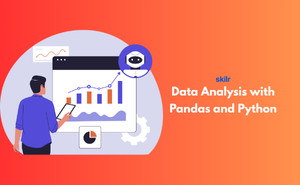👇 CELEBRATE CLOUD SECURITY DAY 👇
00
HOURS
00
MINUTES
00
SECONDS

Learning Data Analysis with Python and Pandas means gaining the ability to turn large amounts of information into clear and useful results. Python provides the foundation, while Pandas gives powerful tools for data organization, cleaning, and transformation. Together, they allow professionals to quickly explore trends, patterns, and key insights hidden in datasets.
Think of it like having a toolkit for making sense of numbers and text. Instead of spending hours manually analyzing spreadsheets, Pandas can instantly run calculations, merge data sources, and present findings in an understandable way. It helps people work smarter with data, whether in business, research, or technology.
This exam is ideal for:
Industry-endorsed certificates to strengthen your career profile.
Start learning immediately with digital materials, no delays.
Practice until you’re fully confident, at no additional charge.
Study anytime, anywhere, on laptop, tablet, or smartphone.
Courses and practice exams developed by qualified professionals.
Support available round the clock whenever you need help.
Easy-to-follow content with practice exams and assessments.
Join a global community of professionals advancing their skills.
Finance, healthcare, marketing, technology, e-commerce, and research.
Yes, it is often used for preparing and cleaning data before applying ML models.
Basic math is enough; advanced statistics is not required for starting.
Pandas is a library that helps handle and analyze data easily in Python.
Yes, the certification covers visualizing data using Pandas and other tools.
CSV, Excel, JSON, SQL databases, and more.
No, it works with both small and large datasets.
Yes, for large datasets and complex analysis, Pandas is more powerful than Excel.
Basic Python knowledge is helpful, but beginners can also start learning.
Beginners in data analysis, analysts, developers, or anyone interested in working with data.